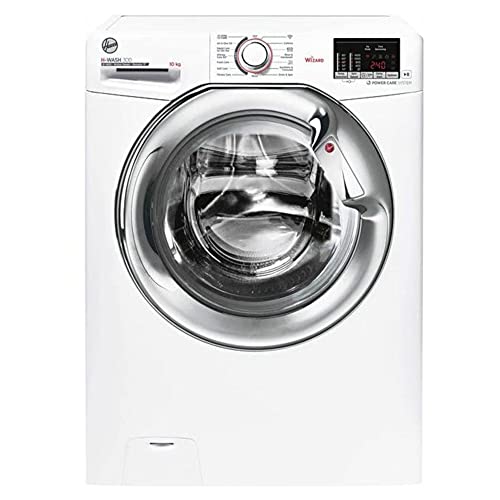Are You Responsible For The 10kg Front Loader Budget? 10 Wonderful Ways To Spend Your Money
Why Buy a 10kg Front Loader? The 10kg front loader is perfect for large laundry loads, with plenty of room for big wash cycles and 13 wash programs, including handwash. It's a sophisticated machine with modern features. Front loaders are generally slower to wash they are not offered with larger capacities, and are susceptible to mildew or mould. However, they are more efficient in water and energy than top loaders.  Energy The major energy expense in front-loaders 10kg is the power used to heat water to the operating temperature and to run the motor. cheapest washing machine 10kg can be offset by lower energy consumption when compared to top-loaders. This includes less power being used during the spin cycle and agitation cycle and the use of less water. Certain machines come with a low-water wash option which uses significantly less water than the cotton cycle, thereby saving on both energy and water usage. In general, front-loading washers consume less soap than top-loaders. The tumbling action of the drum also reduces foamy suds, and reduces overflows, without affecting the cleaning process. However, the door seals and bellows can be more prone to wear than those in top-loaders. The mechanical agitator in a top-loader can also cause significant wear on clothing fabrics. It drags and drops clothes constantly, forcing them against one another. This abrasion can be measured by the amount fabric that is left on the screen for lint, since lint is mainly made up of stray fibers that are detached from clothing while drying and washing. To minimize this, a lot of top-loaders are constructed to operate at a slower speed and may also have a “freshening” cycle to clean the mechanical bellows and gears. Water Top-load washers require an impeller or agitator in order to force water and detergent through clothes, which creates mechanical wear and abrasion. Front-loaders, on the other hand, use paddles that gently lift and drop clothes into a rotating drum for cleaning, reducing such wear. The rate of wear can be approximated by the amount of lint that is collected in dryer lint filtering systems, which is largely composed of stray threads detached from clothes during drying and washing. Because front-loaders use less water than top-loaders which means they are less prone to leakage. Front-loaders require a bellows or seal to prevent water from entering through the door. These systems aren't maintained as often as top-loaders. Front-loaders are less energy-intensive than top-loaders because they can utilize hot or cold water, and some even do it without a heating source. This efficiency can lower operating costs for the same laundry load in areas where energy, water and detergent are costly.
Energy The major energy expense in front-loaders 10kg is the power used to heat water to the operating temperature and to run the motor. cheapest washing machine 10kg can be offset by lower energy consumption when compared to top-loaders. This includes less power being used during the spin cycle and agitation cycle and the use of less water. Certain machines come with a low-water wash option which uses significantly less water than the cotton cycle, thereby saving on both energy and water usage. In general, front-loading washers consume less soap than top-loaders. The tumbling action of the drum also reduces foamy suds, and reduces overflows, without affecting the cleaning process. However, the door seals and bellows can be more prone to wear than those in top-loaders. The mechanical agitator in a top-loader can also cause significant wear on clothing fabrics. It drags and drops clothes constantly, forcing them against one another. This abrasion can be measured by the amount fabric that is left on the screen for lint, since lint is mainly made up of stray fibers that are detached from clothing while drying and washing. To minimize this, a lot of top-loaders are constructed to operate at a slower speed and may also have a “freshening” cycle to clean the mechanical bellows and gears. Water Top-load washers require an impeller or agitator in order to force water and detergent through clothes, which creates mechanical wear and abrasion. Front-loaders, on the other hand, use paddles that gently lift and drop clothes into a rotating drum for cleaning, reducing such wear. The rate of wear can be approximated by the amount of lint that is collected in dryer lint filtering systems, which is largely composed of stray threads detached from clothes during drying and washing. Because front-loaders use less water than top-loaders which means they are less prone to leakage. Front-loaders require a bellows or seal to prevent water from entering through the door. These systems aren't maintained as often as top-loaders. Front-loaders are less energy-intensive than top-loaders because they can utilize hot or cold water, and some even do it without a heating source. This efficiency can lower operating costs for the same laundry load in areas where energy, water and detergent are costly.